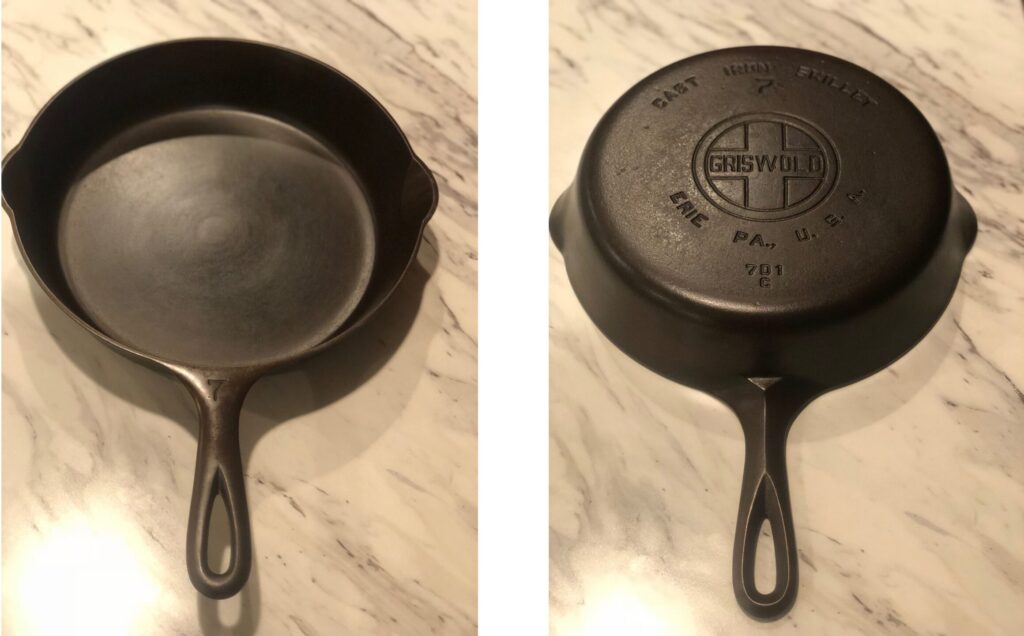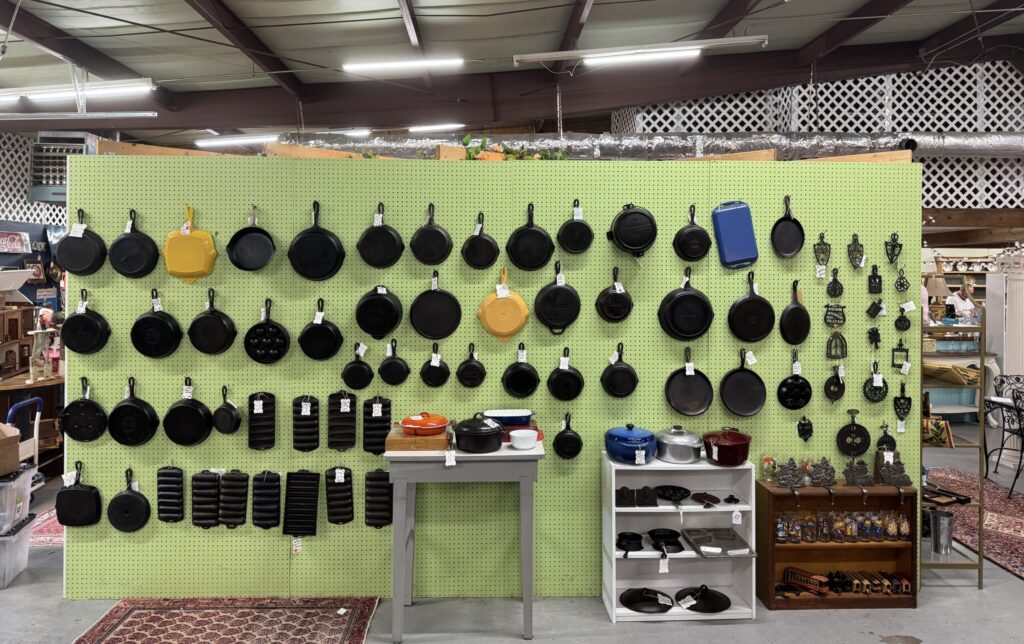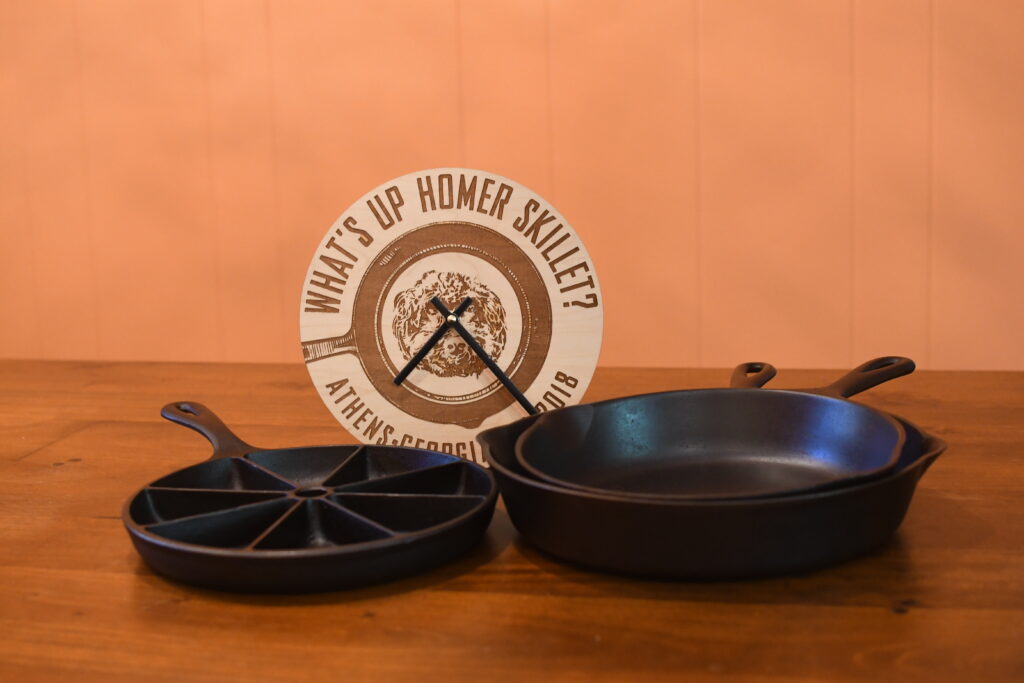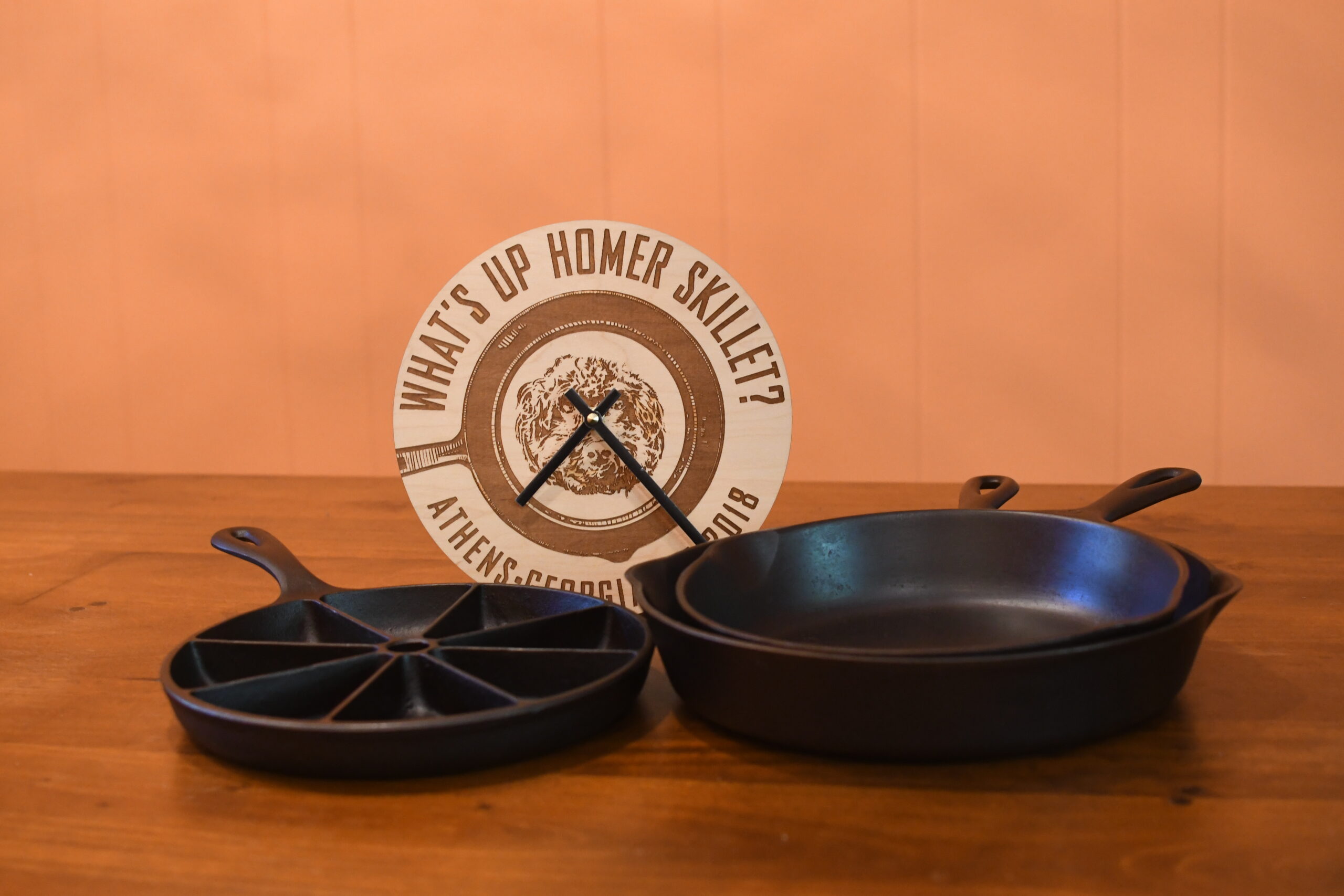It was the combination of frequent trips to resale shops mixed with his tennis burnout that led Athens resident David Ragsdale to his new hobby: cast iron restoration — the process of searching for, stripping down and seasoning decades-old cookware to give it a new life.
“My lady likes Pyrex, so we would often go to second-hand stores, go to, you know, flea markets, what have you, just kind of as a weekend diversion,” Ragsdale said. “And I would consistently see some cast iron.”
Before long, he had a stockpile of old pans and a desire to use them. He researched restoration techniques, learning how to strip off carbon buildup and “season” the pans by baking thin layers of oil into the surface for a natural nonstick finish.
But soon, his collection outgrew his home.
“Once I had this giant stockpile, it’s like, that’s not gonna work in our house,” Ragsdale said. “So we gotta go ahead and figure out the next move. So the next move was trying to get these to market.”
A Life of Love
Ragsdale has been around cast iron all his life. He recalls his dad cooking cornbread in a skillet that he would later inherit. His renewed interest in the material led him to found What’s Up Homer Skillet?, a blog and cast iron restoration business. He also sells his restored cast iron pieces through a stall at Athens Antique and Vintage, a local vintage shop.
On his blog, Ragsdale describes what he loves about the cookware, explaining its ability to retain heat, its durability and its wide range of uses. But he knows that not everyone shares his enthusiasm.
I think what a lot of people do in these times is they think, ‘Hey, a skillet is a skillet is a skillet, I grew up with Teflon. This is just a skillet, right?” Ragsdale said. “And they don’t really understand, this is a different kind of animal.”

In fact, teflon and cast-iron are completely different materials. Teflon is a brand name for a synthetic non-stick plastic coating called PTFE, while cast iron on the other hand, is a heavy, natural iron alloy which gains a non-stick coating with use.
A Sustainable Take

For Ragsdale, his cast iron restoration also connects to a principle beyond cooking: sustainability.
The idea of keeping these things in circulation, the idea of keeping these things usable, has kind of always been at the core of What’s Up HomerSkillet?,” Ragsdale said.
That idea reflects a concept known as the circular economy, a system in which materials are kept in use for as long as possible to reduce waste and limit the need for new production. By restoring old cast-iron cookware, Ragsdale keeps items in use and slightly reduces the demand for new products.
Bigger Picture in Athens
Athens-Clarke County is far from circular. According to the Northeast Georgia Regional Solid Waste Management Authority for 2021-2031 (NEGRSWMA), Athens-Clarke County is projected to generate 110,270 tons of waste in 2025, an increase of more than 1,400 tons from the previous year. That figure is expected to continue climbing in the years ahead.
In their report, NEGRSWMA states that one of the most important messages for the next 10 years is getting both companies and consumers to understand why it’s important to cut back on waste and reuse products.
Emmeline McCumiskey, the circular materials management and zero waste intern for UGA’s Office of Sustainability, said individual choices play a role in a circular economy.

“I think most people can directly engage with the circular economy by focusing on the waste that they do produce,” McCumiskey said.
Considering where waste goes after it’s thrown away can help consumers be more mindful of their purchases. McCumiskey said it is still fine to buy mementos or items that bring joy, but recommends that buyers think about their origins.
“I’m not someone that’s like, you shouldn’t buy that t-shirt because you already have T-shirts. Like, no, buy the T-shirt,” McCumiskey said. “But when you purchase something, think about ‘where did it come from?’”
Denise Young, the waste reduction coordinator for the Athens-Clarke County Waste Reduction Division, said reusing items is even more effective at reducing waste than recycling.
“Typically, I say that recycling is never the answer to our waste problem. You’ve got to go back to reduce, reuse, then recycle.” Young said. “Recycling is really supposed to be like the last-ditch effort of a material before it goes to the landfill.”
Restoring Skillets, Considering the Future
Encouraging people to reuse goods can be difficult, since it often takes more effort than buying something new. Ragsdale acknowledges the limitations of cast iron but says to view it as an investment, not just a utility. With proper care, a cast-iron skillet can outlive its owner, what he calls “heirloom quality.”
“Heirloom quality, to me, means something that’s got age, it’s got value, it’s got use, you know,” he said. “Something that I’d be willing to pass down through the ages.”
A circular economy is not perfect. But Ragsdale and others show that with a bit of thought and some elbow grease, more items than we think can be kept in circulation.
Jill ward is a senior majoring in journalism and international affairs.







Show Comments (0)